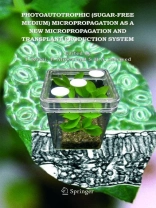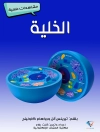This book provides two basic concepts on plant propagation and value-added transplant production in a closed structure with artificial lighting: 1) photoautotrophic (sugar-free medium, photosynthetic or inorganic nutrition) micropropagation systems, and 2) closed transplant production systems with minimum resource consumption and environmental pollution. This book also describes the methodology, technology and practical techniques employed in both systems, which have been commercialized recently in some Asian countries such as China and Japan. We often use a closed structure such as a tissue culture vessel, a culture room, a growth chamber, a plant factory with lamps, and a greenhouse to propagate plants and produce transplants. Main reasons why we use such a closed structure is: 1) higher controllability of the environment for desired plant growth, 2) easier protection of plants from damage by harsh physical environment, pathogens, insects, animals, etc, 3) easier reduction in resource consumption for environmental control and protection, and 4) higher quality and productivity of plants at a lower cost, compared with the plant propagation and transplant production under rain, wind and sunlight shelters and in the open fields. Thus, there should be some knowledge, discipline, methodology, technology and problems to be solved on plant propagation and transplant production common to those closed structures, regardless of the types and sizes of the closed structure.
Daftar Isi
Units and Terminology Use for the Studies of Photoautotrophic Micropropagation.- Concepts, Definitions, Ventilation Methods, Advantages and Disadvantages.- In Vitro Aerial Environments and Their Effects on Growth and Development of Plants.- In Vitro Root Zone Environments and Their Effects on Growth and Development of Plants.- Physiological and Anatomical Characteristics of in Vitro Photoautotrophic Plants.- Photoautotrophic Plant Conversion in the Process of Somatic Embryogenesis.- Photoautotrophic Micro-Propagation of Woody Species.- Ventilation in Micropropagation.- A Commercialized Photoautotrophic Micropropagation System Using Large Vessels with Forced Ventilation.- Low Temperature Storage of Plants Under Dim Light.- Modelling and Simulation for Production Planning in Photo Autotrophic Micropropagation.- Modelling and Simulation in Photoautotrophic Micropropagation.- Frequently Asked Questions.- Plant Species Successfully Micropropagated Photoautotrophically.- Reconsideration of Conventional Micropropagation Systems.- Closed Systems with Lamps for High Quality Transplant Production at Low Costs Using Minimum Resources.- Concluding Remarks.












